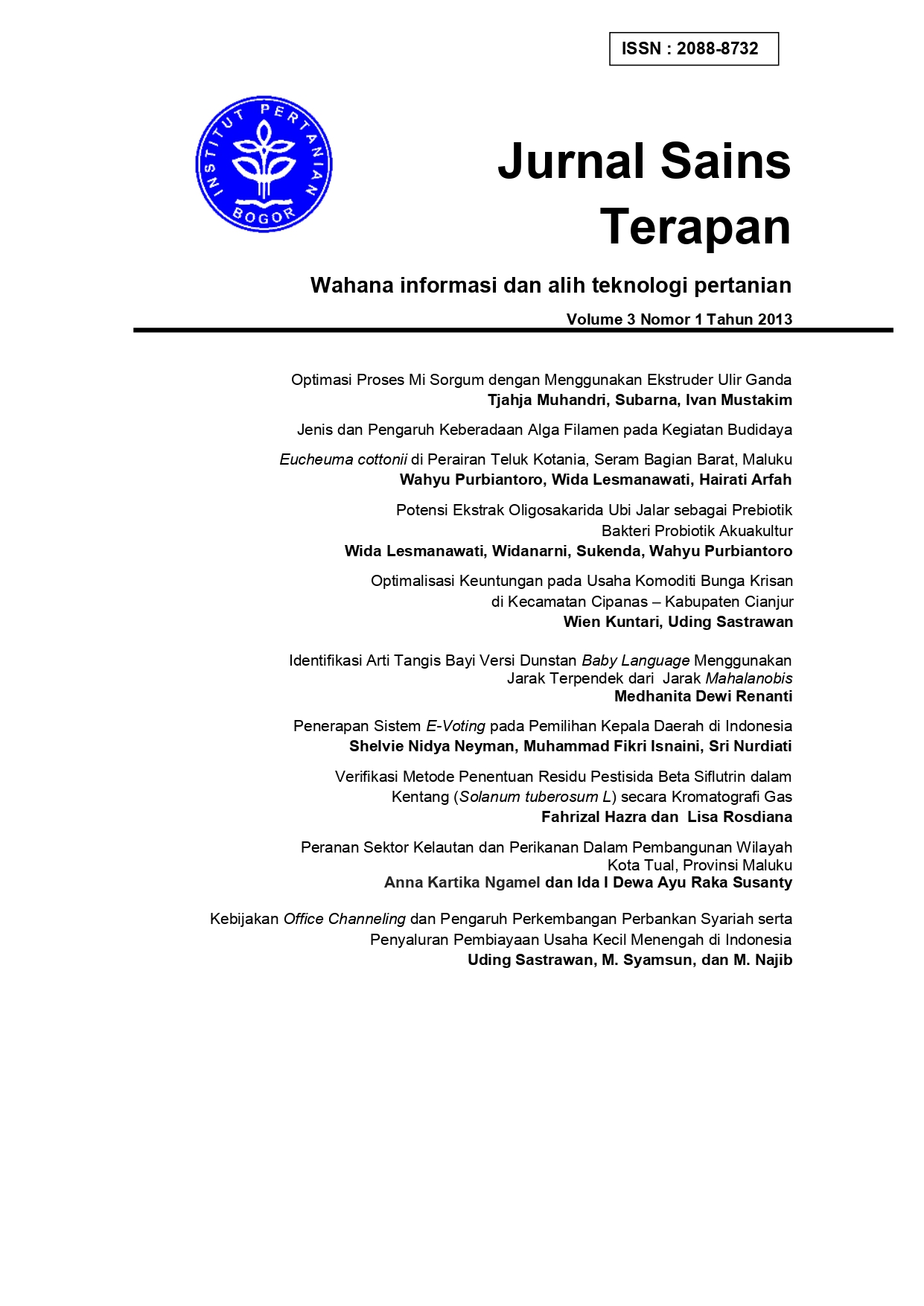Identifikasi Arti Tangisan Bayi Versi Dunstan Baby Language Menggunakan Jarak Terpendek Dari Jarak Mahalanobis (Infant Cries Identification of Dunstan Baby Language Version using the Shortest Distance of Mahalanobis)
Abstract
New born babies have the ability to express their basic needs through sounds. A system to understand the meaning of crying infants of aged 0-3 months is called Dunstan Baby Language (DBL), which was introduced in 2006. This research aimed to perform the modeling of codebook method with k-means clustering technique as feature matching, and Mel Frequency Cepstrum Coefficients (MFCC) as feature extraction to identify the infant cries. The infant cries identification of Dunstan Baby Language version used the shortest distance of mahalanobis. The treatment in this research was the combination of frame length: 25 ms, 40 ms and 60 ms, frame overlap of 0%, 40%, and 60%, and the number of codewords (number of clusters) of 1 to 29. The best accuracy in recognizing five types of crying Infants using mahalanobis distance can be achieved up to 83% when the frame length = 275, the overlap frame = 0.25, and the k = 17. Sound ‘heh’ was the most familiar, whereas sound ‘owh’ was always missunderstood and generally known as ‘neh’ and ‘eairh’.
Keywords: Codebook, Dunstan baby language, Mahalanobis Distance, MFCC
